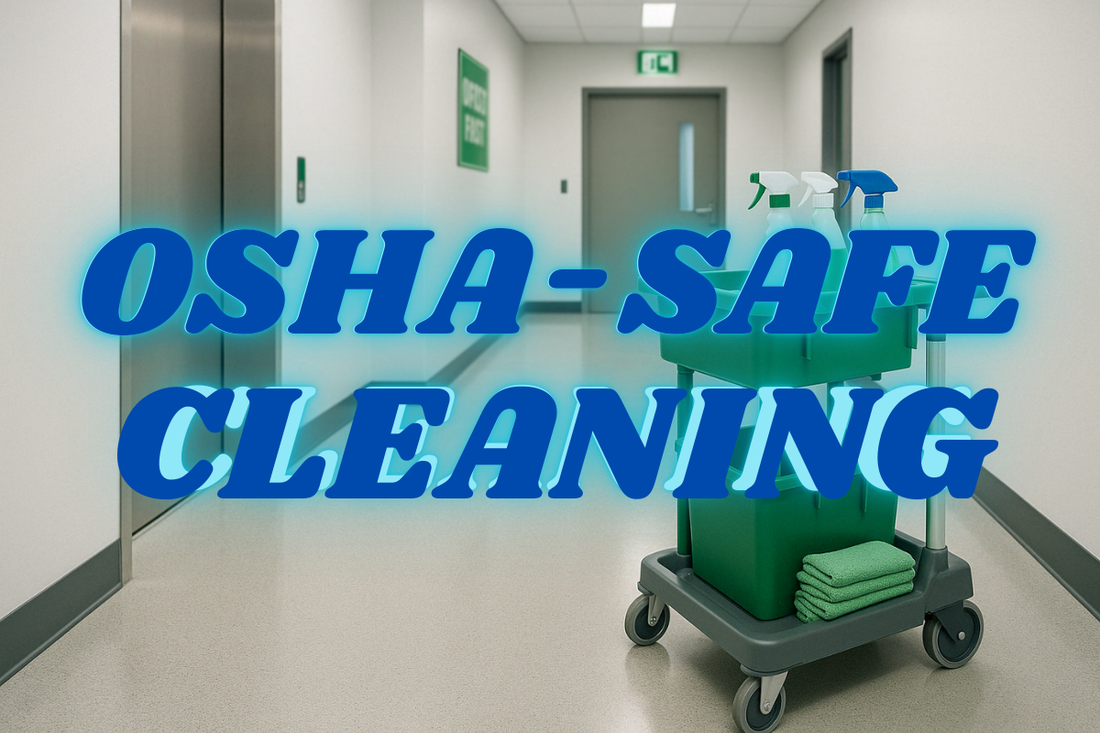
Green Cleaning and OSHA: What You Didn’t Know
Share
In the realm of facility management, the intersection of cleanliness and compliance is not just a requirement; it's a baseline for operational integrity. When it comes to cleaning practices, understanding and meeting OSHA (Occupational Safety and Health Administration) standards is fundamental to safeguarding employees and ensuring a safe workplace environment. Moreover, introducing green cleaning solutions amplifies compliance while safeguarding your organization's bottom line.
The Importance of OSHA Compliance in Cleaning
OSHA’s regulations are designed to protect workers from health hazards that can arise in the workplace. Every facility director should treat compliance not as an obstacle but as a strategic ally in risk management. When cleaning staff use toxic chemicals, they expose themselves to potential harm. The repercussions can lead to accidents, health issues, and significant financial liabilities. OSHA-safe cleaning practices reduce these risks by promoting safer alternatives.
Green Cleaning: A Safer Alternative
Green cleaning solutions are formulated without harsh chemicals that can pose toxic hazards. Transitioning to biodegradable, eco-friendly products is not merely a trend; it aligns with OSHA regulations that advocate for the reduction of hazardous substances in the workplace. Think of it as upgrading your toolbox: where you once had toxic tools, you've now equipped your team with safe, effective alternatives.
Benefits of OSHA-Safe Green Cleaning
- Enhanced Safety: Green cleaning reduces exposure to harmful chemicals, minimizing accidents and illnesses.
- Cost Efficiency: While initial investments may be higher, green cleaning solutions can lead to lower healthcare costs and increased employee productivity.
- Environmental Responsibility: Aligning with green standards not only benefits your facility but also contributes positively to the community.
- Audit Readiness: Facilities using green cleaning methods are often better prepared for OSHA audits, as adherence to safety standards is demonstrated.
Staying Audit-Ready
The array of liabilities that can arise from non-compliance is like a storm cloud hanging over any facility. OSHA can conduct unannounced inspections, and the cost of being unprepared can be steep—fines, re-work, and lost credibility. By embedding OSHA-safe cleaning practices within your facility's framework, you position your organization as not only compliant but also proactive.
Best Practices for Green Cleaning Compliance
- Training and Education: Ensure that all cleaning staff are trained on the proper use of green cleaning products and the relevant OSHA guidelines.
- Proper Labeling: Clearly label all cleaning materials to avoid any confusion and accidental misuse.
- Maintain Records: Document training activities, product usage, and safety data sheets (SDS) to keep a comprehensive record of compliance efforts.
- Regular Audits: Conduct internal audits to ensure that cleaning practices align with OSHA standards and identify areas for improvement.
Conclusion
Green cleaning is not just a compliance checkbox; it's an integral part of an organization's commitment to health, safety, and efficiency. By adopting green cleaning solutions, facility managers can significantly reduce risks and demonstrate a robust commitment to OSHA compliance. Staying audit-ready is not just about following regulations; it reflects organizational integrity and leadership. Equip your teams with the right tools, embrace OSHA safe cleaning practices, and pave the way toward a safer, greener future.
Shop now or contact us to learn more about our non-toxic cleaning products!
